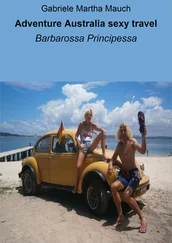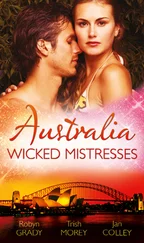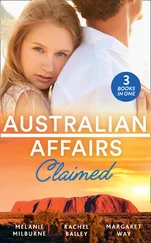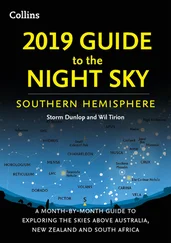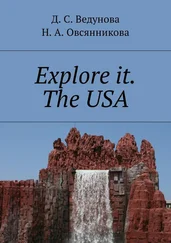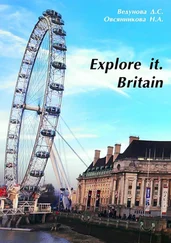Д. Ведунова - Explore It. Australia
Здесь есть возможность читать онлайн «Д. Ведунова - Explore It. Australia» — ознакомительный отрывок электронной книги совершенно бесплатно, а после прочтения отрывка купить полную версию. В некоторых случаях можно слушать аудио, скачать через торрент в формате fb2 и присутствует краткое содержание. ISBN: , Жанр: Языкознание, на английском языке. Описание произведения, (предисловие) а так же отзывы посетителей доступны на портале библиотеки ЛибКат.
- Название:Explore It. Australia
- Автор:
- Жанр:
- Год:неизвестен
- ISBN:9785005142566
- Рейтинг книги:3 / 5. Голосов: 1
-
Избранное:Добавить в избранное
- Отзывы:
-
Ваша оценка:
- 60
- 1
- 2
- 3
- 4
- 5
Explore It. Australia: краткое содержание, описание и аннотация
Предлагаем к чтению аннотацию, описание, краткое содержание или предисловие (зависит от того, что написал сам автор книги «Explore It. Australia»). Если вы не нашли необходимую информацию о книге — напишите в комментариях, мы постараемся отыскать её.
Explore It. Australia — читать онлайн ознакомительный отрывок
Ниже представлен текст книги, разбитый по страницам. Система сохранения места последней прочитанной страницы, позволяет с удобством читать онлайн бесплатно книгу «Explore It. Australia», без необходимости каждый раз заново искать на чём Вы остановились. Поставьте закладку, и сможете в любой момент перейти на страницу, на которой закончили чтение.
Интервал:
Закладка:
Explore It. Australia
Н. А. Овсянникова
Д. С. Ведунова
© Н. А. Овсянникова, 2020
© Д. С. Ведунова, 2020
ISBN 978-5-0051-4256-6
Created with Ridero smart publishing system
Geographical position and peculiarities of the country
Australia([ə'streɪljə], from Latin austrālis – “southern”), the official form is the Australian Union, or Commonwealth of Australia is a state in the Southern Hemisphere, occupying the continent of the same name, the island of Tasmania and several other islands of the Indian and Pacific oceans. It is the sixth-largest country in the world. East Timor, Indonesia, and Papua New Guinea are located to the north of the Commonwealth of Australia, Vanuatu, New Caledonia, and the Solomon Islands to the northeast, and New Zealand to the southeast.
The mainland of the Commonwealth of Australia is separated from the main island of Papua New Guinea by the Torres Strait with a minimum width of about 150 km, and the distance from the Australian island of Boigu to Papua New Guinea is about 5 kilometers. The population as of 31.12.2018 was estimated at 25,180,200. The majority of population lives in cities on the east coast.
Australia is one of the developed countries, being the thirteenth largest economy in the world, and has the sixth largest GDP per capita in the world. Australia’s military spending is the twelfth largest in the world. With the second highest human development index, Australia ranks high in many areas, such as quality of life, health, education, economic freedom, civil liberties and political rights. Australia is a member of the G20, WTO, APEC, UN as well as of the Commonwealth of Nations and the Pacific Islands Forum.
Geographical position
The Commonwealth of Australia is a state in the Southern Hemisphere with an area of 7,692,024 km². Australia is the sixth largest state in the world after Russia, Canada, China, the USA and Brazil, occupying about 5% of the Earth’s land surface. It includes: mainland Australia (including the island of Tasmania) with an area of 7 659 861 km² and other offshore islands with an area of 32 163 km². Australia controls several outer territories: the Cocos (Keeling) Islands with an area of 14 km², Christmas Island with an area of 135 km², Ashmore and Cartier Islands with an area of 199 km², the Coral Sea Islands with an area of 7 km² (water area about 780 thousand km²), Heard Island and the McDonald Islands with an area of 372 km² (part of the Australian Antarctic Territory), Norfolk Island with an area of 35 km² and the Australian Antarctic Territory with an area of 5 896 000 km² (Australia’s sovereignty over this territory is not recognized by most countries in the world). The total area of all external territories is 5 896 762 km² (without the Antarctic territory – 762 km²).
The northern and eastern coasts of Australia are washed by the seas of the Pacific Ocean: Arafur, Coral, Tasman, Indian Ocean – Timor; western and southern – Indian Ocean. The large islands of New Guinea and Tasmania are located near Australia. The Great Barrier Reef, the world’s largest coral reef, stretches for more than 2000 kilometers along the north-eastern coast of Australia.
Australia stretches from west to east for about4,000 kilometers, and from north to south for almost 3,860 kilometers. The extreme points of the mainland are: in the north – Cape York (10° S), in the south – Cape South East Cape (43° S), in the west – Cape Steep Point (114° E), in the east – Cape Byron (154° E).
The length of Australia’s coastline is 59,736 km (of which the mainland is 35,877 km, the island is 23,859 km), and the area of the exclusive economic zone is 8,148,250 km².
Climate
Australia’s climate is heavily influenced by ocean currents, including the Indian Ocean dipole and El Niño, which create periodic droughts and seasonal tropical low pressures that lead to cyclones in northern Australia. These factors cause a marked change in rainfall from year to year. Most of the country’s north has a tropical climate with predominantly summer rainfall. Nearly three quarters of Australia are deserts and semi-deserts.
In the southwestern part of the country, the climate is Mediterranean. Most of the southeast of the country (including Tasmania) has a temperate climate. The aridity of the region is influenced by the cold West Australian Current, which does not provide energy for the formation of a cyclone. Something similar is happening in the west of South America, but everything changes there with the advent of El Niño.
Geological structure
The country’s territory is based on the ancient Australian Platform, which is part of the Gondwana continent in the southern hemisphere of the Earth.
Relief
Most of the country’s territory is occupied by vast deserts and low-lying areas. The most famous deserts are the Great Sandy Desert, the Great Victoria Desert. To the east of the Victoria Desert lies the Great Artesian Basin semi-desert. In the east of the mainland, there are severely destroyed, low mountains of the Hercynian folding – the Great Dividing Range with a maximum height in the south (Mount Kostsyushko, 2228 m; Townsend, 2209 m). Faults and river valleys dissect mountains into separate massifs.
The tops of the mountains are domed. The eastern slopes of the mountains drop abruptly to the sea, the western ones are gentler. Australia is the only mainland without active volcanoes and modern glaciation.
The lowest point in Australia is Lake Eyre (—15 m), which covers an area of about 15,000 km².
Mount Kostsyushko is the highest point of the Australian continent. The highest point of the country (Mawson Peak volcano) is located on the subantarctic island of Heard.
Natural resources
The main natural wealth of the country is mineral resources. Australia’s natural resource potential is 20 times higher than the world average. The country ranks 2nd in the world in terms of bauxite reserves (1/3 of the world’s reserves and 40% of production), zirconium, 1st in the world in uranium reserves (1/3 of the world’s) and 3rd place for its production: 8022 tons in 2009. The country ranks 6th in the world in terms of coal reserves. It has significant reserves of manganese, gold and diamonds. In the south of the country (Brownlow field), as well as off the north-eastern and north-western coasts in the shelf zone, there are minor deposits of oil and natural gas.
Nature
Although most of the continent is semi-desert and desert, Australia has a variety of landscapes, from similar alpine meadows to tropical jungles. Due to the continent’s significant age (as well as low soil fertility), a wide variety of weather conditions and long-term geographic isolation, Australia’s biota is rich and unique. The flora and fauna of Australia in total include about 12 thousand species, of which about 9 thousand are endemics. Among flowering plants 85% are endemic, among mammals – 84%, birds – 45%, coastal fish – 89%. Many of Australia’s ecological regions and their flora and fauna are threatened by human activities and introduced plant and animal species.
History of Australia
Australia was inhabited about 50,000 years ago, and the remains of its indigenous population are Australian Aborigines. Documented History of Australia begins with its discovery by Europeans in the early 16th century.
The first documented landing of a European on the shores of Australia took place in 1606 – it was the Dutchman Willem Janszon. In addition to him, during the 17th century, another 29 Dutch sailors explored the western and southern coasts of the continent, giving it the name “New Holland”.
Читать дальшеИнтервал:
Закладка:
Похожие книги на «Explore It. Australia»
Представляем Вашему вниманию похожие книги на «Explore It. Australia» списком для выбора. Мы отобрали схожую по названию и смыслу литературу в надежде предоставить читателям больше вариантов отыскать новые, интересные, ещё непрочитанные произведения.
Обсуждение, отзывы о книге «Explore It. Australia» и просто собственные мнения читателей. Оставьте ваши комментарии, напишите, что Вы думаете о произведении, его смысле или главных героях. Укажите что конкретно понравилось, а что нет, и почему Вы так считаете.



